
Hype or future: Will ChatGPT revolutionise corporate learning?
AI and chatbots have the potential to transform employee training and development – Our experts check out the possibilities
ChatGPT is a chatbot powered by artificial intelligence (AI). “GPT” stands for “Generative Pretrained Transformer” – meaning the chatbot has been trained up on countless texts. ChatGPT can write content, evaluate compositions, translate, and write screenplays, job applications, emails, entire essays and even song lyrics.
Interacting with ChatGPT is as simple as typing an instruction into its chat window. So that’s what I did:
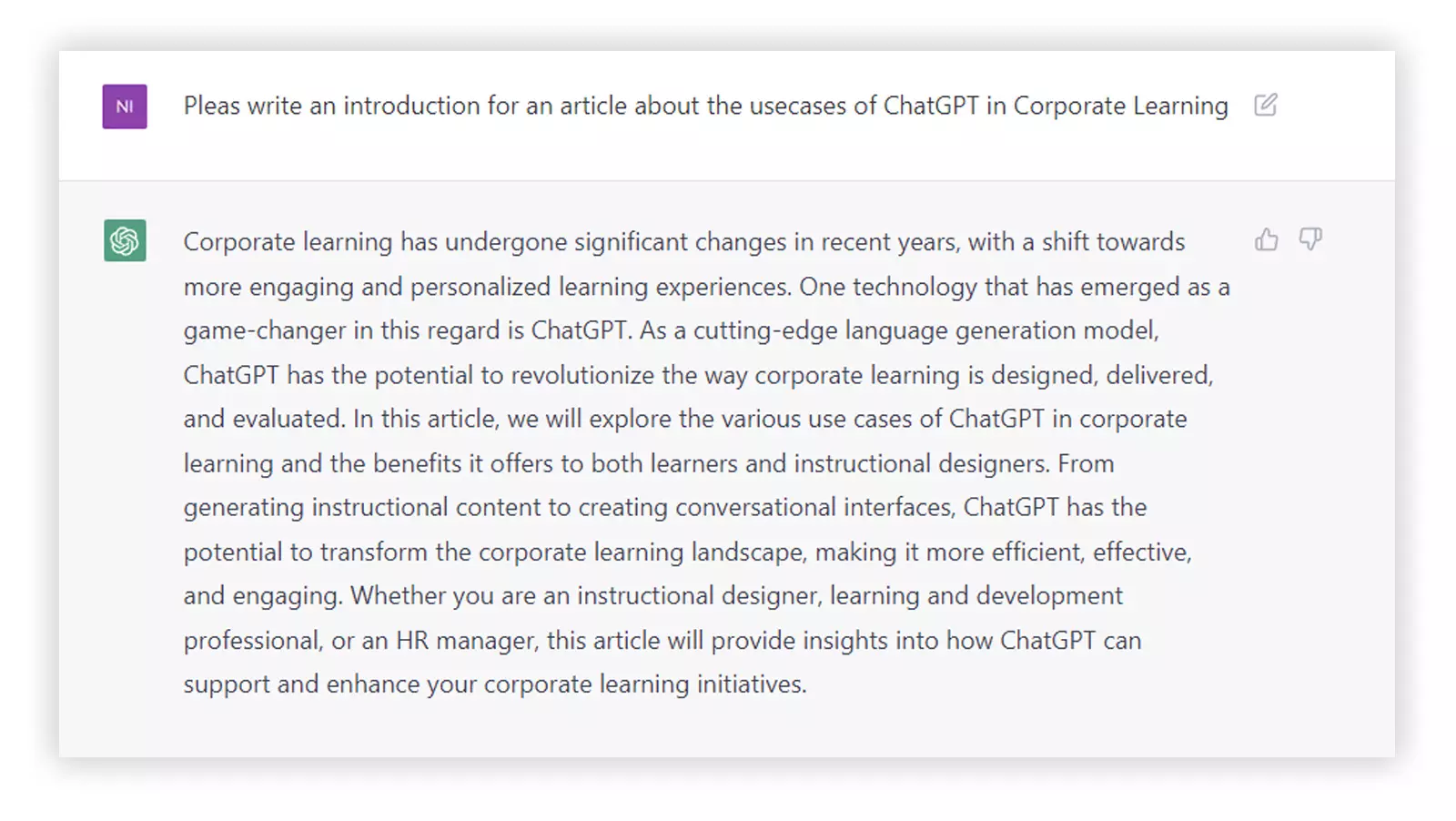
So far, so good. I probably would have put it differently myself, but it’s certainly not wrong. ChatGPT has many potential applications, that’s for sure. But how exactly might we use it in corporate learning and to create training content? I teamed up with an expert to take a closer look.

Diving right in: Making friends with ChatGPT
Faced with the unknown, most people are initially defensive and sceptical. That’s certainly true with new technology. Twenty years ago, we were up in arms about Google, but now we wonder how we ever lived without it.
All the more reason, then, for Arne Benoist to put ChatGPT through its paces. “I was very keen to try ChatGPT for myself – and I was surprised how well it works,” he says.

Arne Benoist, Instructional Designer at imc
Instructional designers convert material and topics into learning content and didactic concepts. They select the learning formats to match the target group, learning goals and corporate objectives. And finally, they create learning environments to make it all happen.
To test the AI, the instructional designer used an old training project that had already been completed. “The tasks I gave ChatGPT were repeats of ones I’d completed myself when I designed the training.”
Summarising long texts:
ChatGPT does a very good job here. It can trim long, complex texts down to any word count and unpack jargon, producing short, easy-to-understand-prose.
Translating:
Here, ChatGPT is similar to DeepL, except that you can specify style. For instance, you can tell it to translate into simple or age-appropriate English.
Brainstorming:
Here, ChatGPT can come up with good initial ideas that you can build on in the later design process.
Arne Benoist did, of course, encounter a few limitations. “For summaries and translations, we can only use public domain content, as OpenAI is an open, online platform. You should never upload company data or confidential information. Currently that would fall foul of most companies’ data protection and privacy rules.”
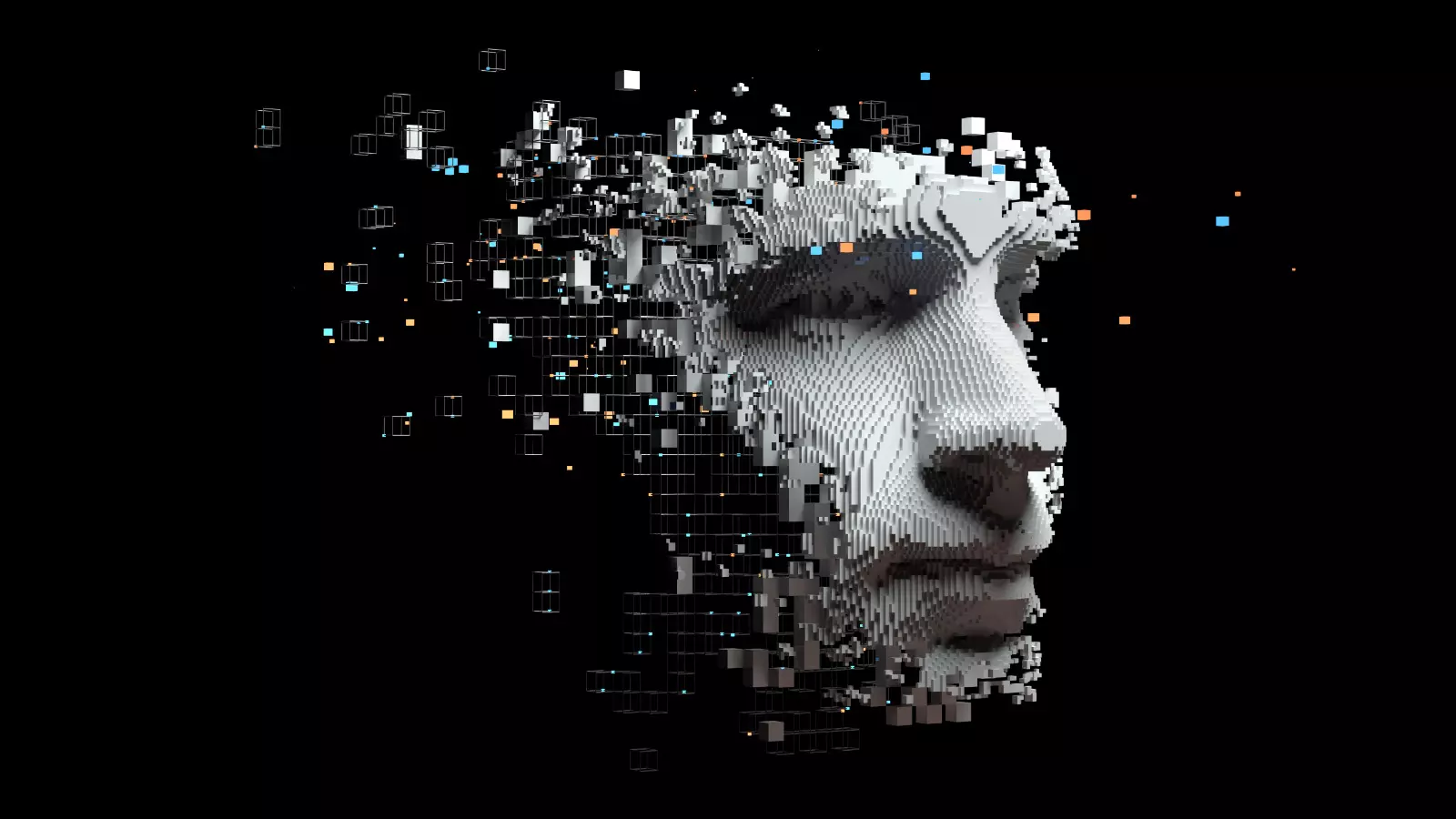
But: Can ChatGPT creatively design training content?
Designing modern e-learning content is an intensely creative process. It seems strange to think a hunk of AI might make a good job of it. So, Arne Benoist gave it a try:
“For many of our designs we use stories, complete with scenarios, characters and plots. Hence, I asked ChatGPT to create a scenario for a web-based training course on cybersecurity. Well, the chatbot did pretty well, actually, but after a few repeat requests I kept getting similar scenarios. I’m sure I could have got better drafts if I’d fiddled around a bit more and given more specific instructions. But the first stories were too smooth and lacking in dramatic tension for my liking.”

While ChatGPT is thorough and produces solid texts, it appears to output an average of all the knowledge at its disposal. Consequently, for creative work, we’ll be needing the brains and experience of our human experts for a while yet. (Note from author: Phew!)
Still some way off: ChatGPT integration into training courses
Learning with chatbots and IT-powered applications is already a thing in many areas of corporate learning, including with imc Express. But integration of ChatGPT itself? Arne Benoist thinks that’s still some way off. “In most cases we’re working with highly detailed, specific content. So, to use AI in our training courses, we’d have to build the AI ourselves – so we could control it. I’m referring here mainly to data protection, but also to verifying sources.”
Nevertheless, Arne Benoist will be keeping a very close eye on ChatGPT and similar developments. “I’m very much aware ChatGPT is the start of something big, and it has quickly garnered a lot of fans. But I think we still have a way to go before it will truly revolutionize employee training and development. While I can imagine integrating ChatGPT or similar applications in the future, we’re not quite there yet for the kinds of projects we look after.”
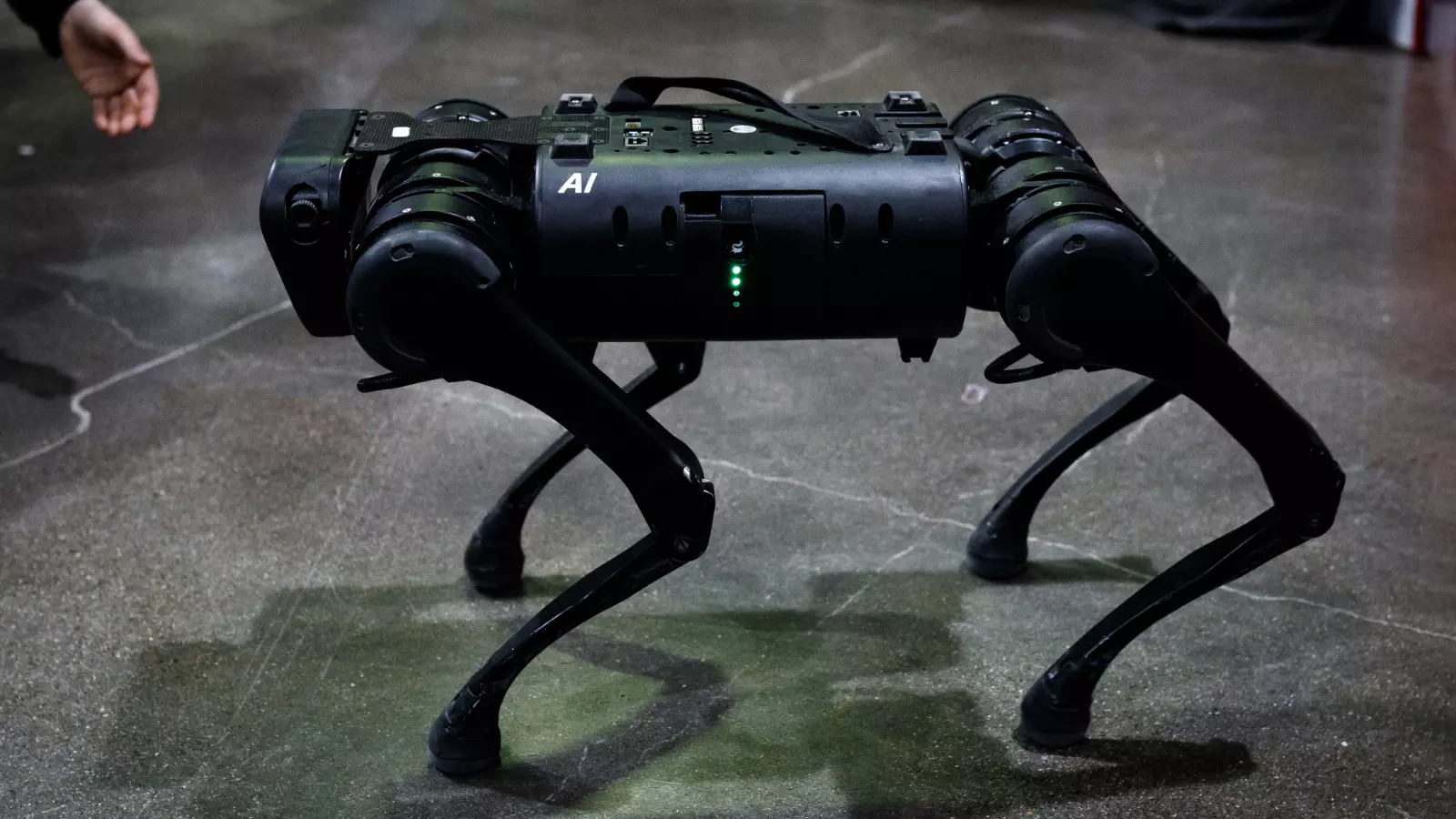
Big things are happening
ChatGPT is certainly not short of ideas on how it can enrich corporate learning:
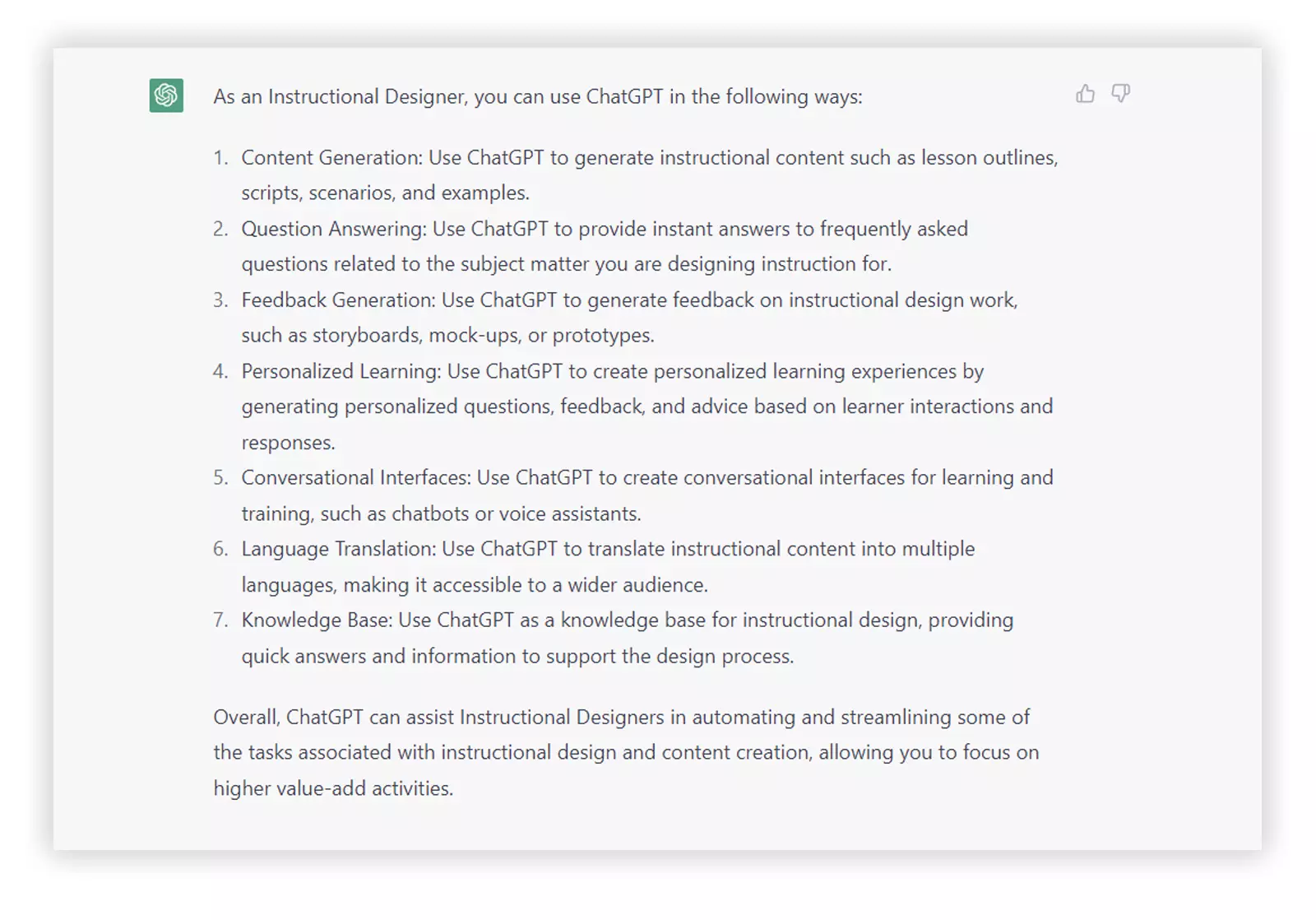
You never know. As Arne Benoist says: “Perhaps we’ll read this article again in a year’s time and laugh at how it has all turned out differently to how we thought.” OK, it’s a date! Let’s check in again in January 2024 and see how far ChatGPT and AI have come.
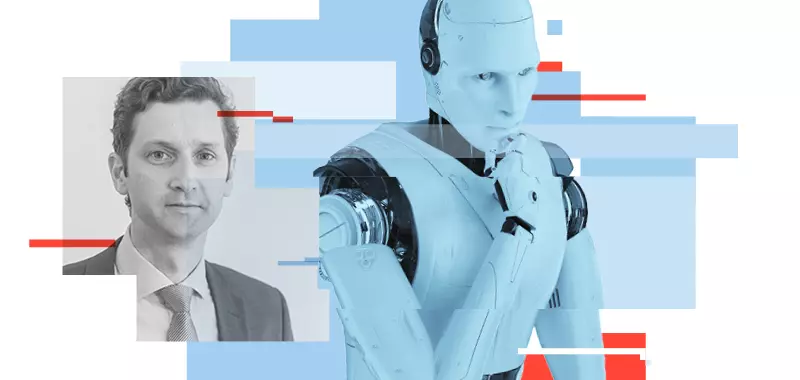
Can Germany afford its current AI scepticism?
Artificial intelligence (AI) is often viewed sceptically in Germany, but often without justification. In this interview with Kristian Schalter, we talk about how future technologies will change our working world.

AI in Corporate Learning
There are many fears about the topic of artificial intelligence (AI). But especially in corporate learning, AI can be a great help.
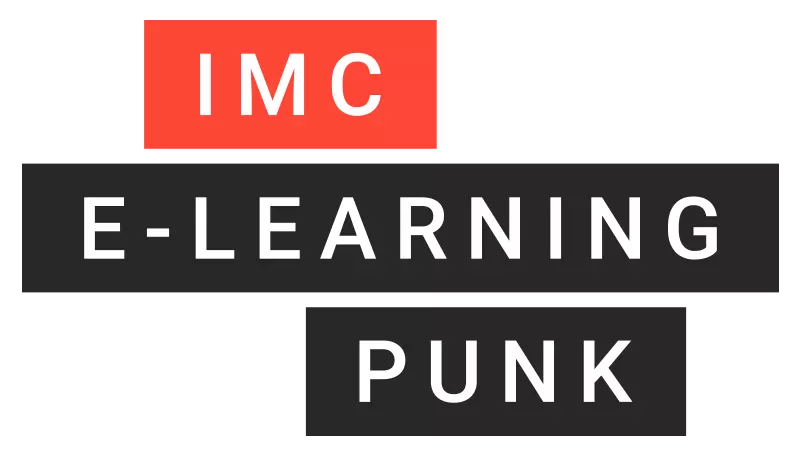
Contact person
I joined the imc newsroom team in 2021. As a journalist my heart beats for content and storytelling.
I’m excited to figure out how e-learing and digitization affect the future of work. My task is to create content to talk about and I’m always looking for trends.
Privately I love to travel and eat Tapas.
Topics: E-Learning Trends, Corporate Social Responsibility, Press and Influencer Relations
